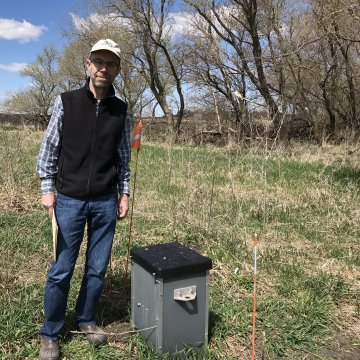Explore our blog featuring articles about farming and irrigation tips and tricks!
Saturated Buffers Are Key To Removing Nitrates From Tile Drainage

By: Megan Vollstedt
Lee Tesdell farms 80 acres near Huxley, Iowa, that have been in his family since 1884. To maintain such a legacy, he’s adopted a long-term view of sustainability and strives to make his farm an example of the impact conservation practices have on soil health and water quality.
Tesdell and row-crop operators Mike and Charles Helland work together on the farm’s management, which over time has grown to include a no-till corn/soybean rotation, cover crops, a waterway with native grasses, brome grass buffer strips, a woodchip bioreactor, and prairie strips.
In addition to addressing erosion concerns and a leaky system with excess nutrients in the fields, Tesdell installed a saturated buffer in 2017 as another layer to further improve the water going into his creek.
Tesdell says, “The land and creek have benefitted because of strong vegetation in buffer strips already and microbial activity even before putting in the saturated buffer system.”
The farm’s two edge-of-field practices have reduced the nitrogen load into the nearby waterway. The wood chip bioreactor, with data collected since May 2014, has reduced nitrates by 53%. The saturated buffer, with data from 2018, shows denitrification at 91%.
HOW IT WORKS
A saturated buffer intercepts tile drainage water before it outlets into a stream. The water is diverted by a water-control structure through a perforated drainage pipe and then pushed through an existing filter strip. As the water drains through the soil profile, perennial plants take up the excess nutrients.
Stay up to date on all T-L news and get alerts on special pricing!


